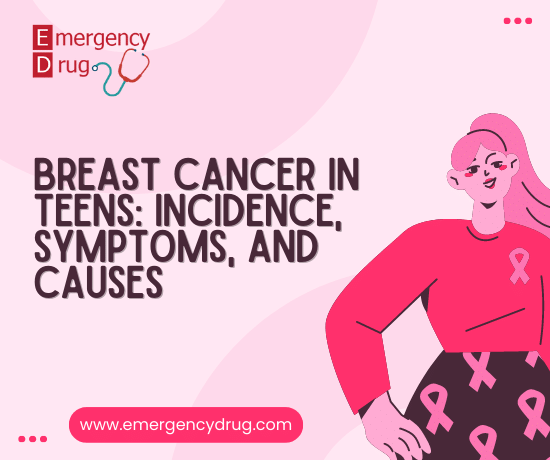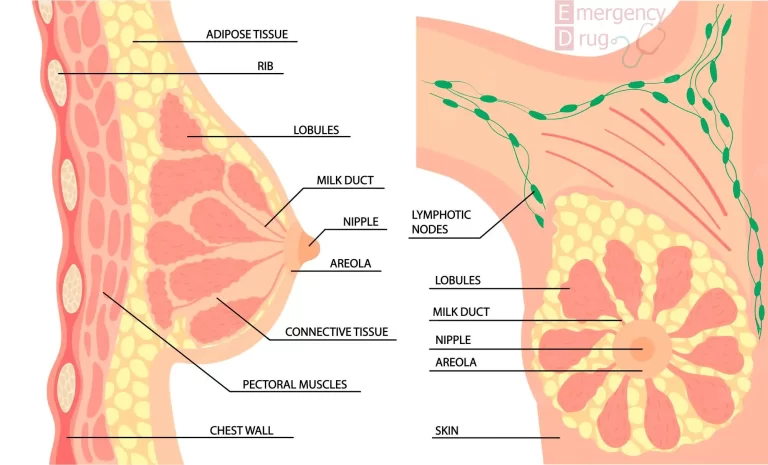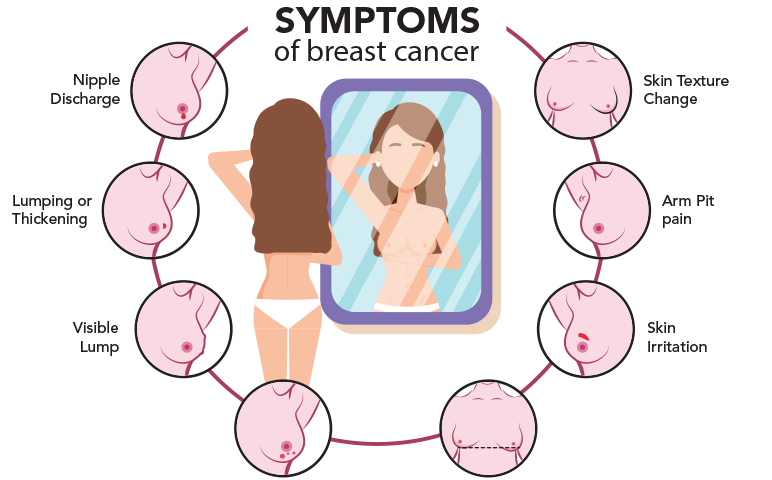Breast Cancer in Teens: Incidence, Symptoms, and Causes
Hasan
10 May, 2025


Table of Contents
Introduction
Breast cancer in teens is rare, but it can happen. It can be stressful and intimidating to discuss breast cancer with teenage girls. Instead, it should be an empowering and liberating experience. It will help the parents establish and maintain a clear communication channel with their teens regarding breast cancer.
Teenagers often worry that changing breasts during puberty will lead to breast cancer. This thinking is a general misconception of teenage girls. Teenagers need to confirm the common changes of breasts. They should consult a doctor for reassurance to ease their concerns. This discussion will be a helpful guide for the teens and their families. Let’s start!
Common Incidence of Teen’s Breast Cancer
Breast development at the early stage of teenage girls is a common incidence. It can start as a lump at the low part of the breast nipple. It is a common change that can have a psychological effect on the girls. Most of the time, some misconceptions can occur in their mind.
Developing breasts is simply a new experience for teenagers. Parents should reassure their girls about their normal breast development facts because teenage breast cancer is rare.
Breast cancer occurs during normal breast cell growth. Growth of the abnormal cell and dividing can form a tumor. This may spread out to the body cells and harm healthy tissues.
Anatomy of the Breasts
The breast is the tissue that covers the chest (pectoral) muscles. Besides milk-producing glandular tissue, women’s breasts also contain fatty tissue. The size of the breast is determined by the amount of fat in it.There are 15 to 20 lobes in each breast. Their arrangement resembles a daisy’s petals. In each lobe, milk is produced in smaller structures called lobules.
Ducts connect the lobes, lobules, and bulbs. Some ducts lead to the nipple, located within a dark area of skin called the areola. Through ducts, milk travels throughout the body. Connecting ducts form larger ducts that exit the skin in the nipple. The areola is a dark area of skin surrounding the nipple.Breasts are supported and shaped by connective tissue and ligaments. The breast is supplied with sensation by nerves.
The breast also contains blood vessels, lymph nodes, and vessels.Lymph vessels and blood vessels are also present in each breast. Lymph nodes are small bean-shaped organs that are connected to lymph vessels. There are clusters of lymph nodes under the arm, above the collarbone, and in the chest. There are also many other places on the body where they are located.

Symptoms of Teen’s Breast Cancer
Fibrocystic breast changes, infections, and fibroadenomas are some breast conditions in teenagers that are not tough to treat. Early detection of breast cancer is very important to avoid the alarming situation. It’s the responsibility of parents to inform their teenage girls about the self-diagnosis of breast cancer. These can be-
Changing breast shape is a common developmental issue. If there is an abnormal change of breast sizes with acute pain, you should contact a doctor.
Breast pain during the menstrual period is a common problem. But severe pain can be a diagnosis of breast cancer.
Development of breasts can be late or sometimes early. These are perfectly normal. But, abnormal development should be concerned.
You will find around twelve percent of women have breast cancer. Most of them are older. Teenage girls face a lower risk than elders. The most common symptoms of breast cancer are included here-
- Breast swells completely or partially
- The breasts become hard and hot
- Red or swollen dumplings on the skin
- Breasts with an itchy, scaly rash
- A puckering or dimpled breast
- Inflammation of the breast or nipple
- Retraction of the nipples
- Dry, flaking, or thickened breast or nipple skin
- Acute nipple discharge
- Lumping the breast
- A noticeable change in the breasts’ size, shape, or symmetry
- Breast or nipple changes in skin
- Non Menstrual discharge from the nipple is not related to pregnancy, menstruation, or breast-feeding

Causes of Teen’s Breast Cancer
There are a few cases of teenage breast cancer. It is mostly an identified issue among older women. Doctors cannot diagnose the actual causes of teenage breast cancer. A small lump in a teen’s breasts can be a normal hormonal fluctuation. Sometimes, it can be an infection. After that, there are some risk factors of breast cancer that you can consider as causes. Such as-
Background History: Family history of breast cancer is an important fact. Check out the history of your mother and grandmother. If they had breast cancer, you have a risk. But, this ratio is only from five to ten percent.
Dense Breasts: The structure of breasts depends. The beasts with more connective tissues like dense feel can risk cancer. But, the normal hormonal fluctuation can heat the breast tissues.
Genetic Mutations: Genetic mutation refers to the changes of one or more genes. BRCA1 and BRCA2 mutations are more notable. This genetic mutation can cause different disorders.
Overweight: Being overweight is not fit for a healthy life. Obesity or overweight features after the menstrual period enhances the risk of breast cancer. Obese women have around twenty to forty percent risk for increasing breast cancer.
Radiation Therapy: The women having radiation therapy for Hodgkin lymphoma are at high risk of breast cancer. On the other hand, radiation therapy destroys cancer cells with high-energy rays. Breast cancer patients may also require radiation treatment.
Personal History: The personal history of women can indicate breast cancer disease. Women’s blood-related relatives like their mother’s sister, who have contracted breast cancer, have a risk of growing this horrible disease.
Bad habits: An inactive lifestyle enhances the risk of breast cancer. Besides this, excessive intake of alcohol and smoking increases the risk of breast cancer.
Risk factors like older age and genetics are not preventable to alleviate the risk of breast cancer. But, there are different factors mentioned that are preventable and controllable also. We all have to be conscious of these general factors.
Prevention of Breast Cancer
Some risk factors cannot be changed. But, many controllable risk factors are available throughout our whole life. You can prevent the risk of breast cancer through your lifestyle.
Healthy Diet
A healthy diet can decrease different risks of diseases like diabetes, stroke, cancer, etc. girls need to focus mostly on plant-based foods. Besides these, extra-virgin oil and mixed nuts can reduce the risk of breast cancer. Fish instead of red meat have to be included in the regular diet.
Healthy Weight
Obesity or being overweight normally increases the risk of any disease. Every teenage girl should maintain a healthy weight to prevent breast cancer.
Low Alcohol
It is generally recommended that a low intake of alcohol fits your health. Excessive alcohol will increase the risk of breast cancer.Be Active
Physical activity normally keeps you healthy. It will help you to maintain a healthy weight. Grow physical activity and prevent the risk of breast cancer.
Breast-feed
A lactating mother should breastfeed continuously. It will help to prevent breast cancer naturally.
Time to Start Examination and Treatment
Doctors don’t suggest examining the breasts of teenage girls. Breast pain and other irritations can be everyday problems due to hormonal fluctuation. But, a drastic change in breast size, shape, color can be a troubling sign. You can go to a healthcare provider for the best suggestion in these cases. Your doctor will give you different exams during a critical situation.
Treatment of breast cancer varies. It depends on the condition of the patient and disease. Everolimus, neratinib, palbociclib, and palbonix are some generic medicines consulted by doctors for breast cancer treatment. Some common treatments are-
- Surgery process
- Hormonal therapy
- Radiation therapy
- Chemotherapy
Here in this video you will know how to self examine breasts https://youtu.be/JV0WdDKExEs
Frequently Asked Question (FAQ)
What does a breast lump feel like?
Generally speaking, breast tissue feels lumpy and sponge-like. It can be hard to know if you’re feeling an actual lump or just normal breast tissue. Unlike the surrounding tissue, a breast lump feels solid.
Can breast cancer occur at the age of 20?
Diagnoses can be difficult for this early age group, so it isn’t recommended. After that, a breast cancer diagnosis can occur in your 20s or 30s. You can take steps to diagnose and treat yourself earlier.
Do breast cancer lumps hurt?
An abnormal lump or mass in the breast is the most common symptom of breast cancer. A lump can be painful, but the bulk is usually painless.
Final Words
The treatment options available to patients with breast cancer of teenagers or young adults are often quite diverse. The treatments available for this disease can vary widely. So, survival rates for young breast cancer patients are often high today.
To visit oncology medicine
Click here
